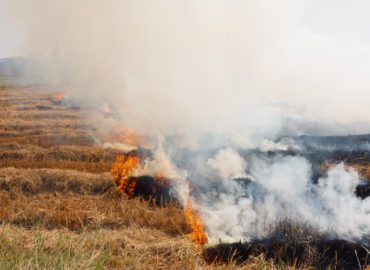Coming from the Detroit Metropolitan area of Michigan, we know a few things about resilience. Whether it is surviving the bitter cold Michigan winter months with frozen pipes and vehicles, snowmelt flooding in the spring, or an automotive manufacturing industry crisis resulting in a statewide recession, we know how to not only survive but to thrive. We are a resilient group of people, businesses, and community members who know how to work hard and play hard!
For example, consider the Detroit Lions’ professional football team’s recent history. Despite their struggles, they finished last season among the National Football League’s top four teams. The Detroit Tigers professional baseball team has also been extremely resilient, especially over the last two years, when few thought they would make it through the season, let alone be in the playoffs. Currently, the Tigers are holding the number one spot in Major League Baseball!
However, another way to view resilience, and define community resilience, according to the National Association of County & City Health Officials, they cite it as follows, “Community resilience looks at a community’s ability to withstand, adapt, and recover from a disaster or public health emergency. The overall health of a community is a key role when planning for a healthy, resilient, and sustainable community. To address community resilience, local health departments (LHDs) are working to strengthen their public health and healthcare systems, allowing them to improve their community’s physical, behavioral, and social health as they prepare for, respond to, and recover from a disaster or public health event,”.
What is the definition of community economic resilience in Michigan
Let’s take, for example, one of our automotive giants, Ford Motor Company, and what they have been up to as well as what they will be doing over the next few years. Currently, they are transforming, modernizing, and consolidating their sprawling 7.5 million-square-foot engineering and headquarters facilities into a high-tech Silicon Valley-style property that will span two campuses. The renovated campus will bring over 30,000 employees, who now work in seventy disparate buildings, together into two locations.
Per Ford Motor Co.’s official website, they are also involved in a historical change happening in the City. The Michigan Economic Development Corporation explains how Ford has focused funding in the downtown Detroit area with the creation of the Michigan Central Innovation District. “The company bought the historic Michigan Central Train Station in 2018 to act as an anchor for the 30-acre campus to act as a hub for talent, mobility innovation, entrepreneurship, sustainability, affordable housing, small business opportunities and community engagement,”.
They go on to share this quote, “The Detroit area is becoming a center of competence for user experience technology and many of the suppliers that exist in Silicon Valley now have representation in Michigan,’ Vince Gallante, Stellantis vice president of global user experience design. “We’re supporting all 14 of Stellantis’ brands with hires from Apple, Disney and Microsoft,”.
Michigan State University explains community resilience like this, “One way to conceive of community resiliency is to imagine communities as a three-legged stool. Each leg has a critical role to play in providing for the overall stability of our place. These legs are predictability, survivability, and response-ability.
Predictability is our ability to anticipate future events that may disrupt our current economic, social and environmental systems. This includes estimating the probability of a shock occurring and the intensity of the event if it were to occur. This involves conducting environmental risk assessments (how likely are we to experience an environmental shock) economic vulnerability assessments (are we reliant on a few key industries in our regional/local economy) and social cohesion (are we a place with strong social bonds).
Survivability are those actions we take to prepare for and mitigate the impact of a predicted event for the purposes of reducing death and property destruction. These actions generally take place in preparation for an anticipated event such as preparing emergency response plans, constructing shelters, investing in green/hard infrastructure, identifying evacuation routes, establishing early warning systems, and having effective emergency communications networks in place (formal and informal). This is the “duck and cover” phase of community resiliency. We anticipated the event, we prepared for it, now let’s pray we survive it.
There are financial and other resources available to help plan and finance actions communities can take to prepare for events. The Federal Emergency Management Agency (FEMA) has substantially improved its services since hurricanes Katrina and Sandy. Community and economic development leaders should make themselves aware of and utilize the support available through FEMA.
Response-ability in community resilience encompasses our willingness to act to prevent or reduce the potential tragic consequences of an event. This includes our willingness to act before a predictable event as well as after an event occurs. Our capacity to care for ourselves before a disruptive event and after a traumatic occurrence is an indication of our response-ability. Clearly mobilizing emergency response teams and programs that can help provide for the needs of those who have suffered injury or loss from the event must be our first order of response-ability. However response-ability also calls upon us to recognize potentially destabilizing events (economic vulnerability, social in justice and racial inequality) and seek to address these before a traumatic event may occur.
Effective response-ability calls upon community and economic developers to lead beyond the emergency response actions of providing food, shelter, medical and business assistance, and other basic needs. A resilient community in accepting response-ability recognizes its vulnerabilities and mobilizes to address these. Past disruptive events can offer important lessons that can help us be more responsive to potential future disruptive events,”.
Is Ford making a commercial move of corporate headquarters?
Ford Motor Company’s strategic pivot towards a more integrated, innovative, and sustainable future is not a traditional move, but rather a consolidation, as mentioned above.
Detroit’s resurgence as a center of excellence in technology and mobility is being catalyzed by initiatives like the Michigan Central Innovation District, setting the stage for a new era of growth and prosperity in the Motor City. With Ford at the helm of this transformative journey, the possibilities for Detroit are genuinely limitless.
Michigan and its major cities, such as Detroit, Lansing, Traverse City, Grand Rapids, and the like, are some of the most resilient places in the United States, whether it is in terms of environmental, economic, or sociological aspects – we are truly Pure Michigan strong.
Characteristics of community resilience
In conclusion, while we face many challenges, fostering community resilience is essential for a sustainable future. By working together, we can build stronger, more adaptable communities that thrive in the face of adversity.





